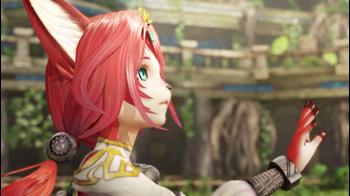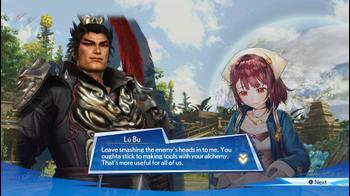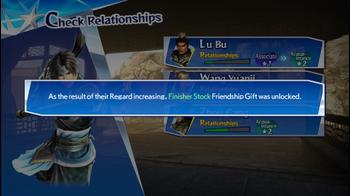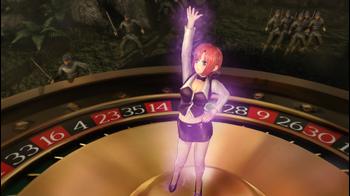
Warriors All-Stars Review
Being a huge Dynasty Warriors fan who has been following the series since its inception, I was beyond excited when I found out Koei Tecmo and Omega Force was working on a crossover effort called Warriors All-Stars. As the name implies, it features different protagonists and antagonists from Koei Tecmo's biggest franchises.
Each time they announced a new playable character, it felt like they dug that much deeper into their archive, even reaching for those obscure titles forgotten with time. That only made me more thrilled by the prospect of what the game was trying to deliver for fans of the publisher’s output.
The story is set in a world on the brink of destruction after a magical spring that gives the planet its miraculous power dries up once the king dies. In an attempt to rescue the land from its current state, young princess Tamaki performs a ritual to summon heroes from other realms who are destined to save them.
But the ritual goes horribly awry when Tamaki can’t control her power, causing the heroes to scatter all across the world. Not deterred in the slightest, she is determined to find and recruit the best of these heroes to the cause.
Their job is to visit each of the five shrines around the land to revitalize the spring and restore peace to the domain. As the prophecy states, whoever saves their planet will be bestowed the honor of being their new ruler. It won’t be easy, however, as there is a power struggle in play and something even more sinister behind the scenes.
Right off the bat, soon after you begin Story mode, you’re given a choice of several characters to choose from. Among Koei Tecmo’s various properties, you have Oka from Toukiden, Sophie from Atelier Sophie, Laegrinna from Deception IV, William from Nioh, Arnice from Nights of Azure, and more. Over the course of the story, you’ll be able to unlock additional characters you can control in the Story mode like Opoona from… Opoona.
For my first playthrough, being a big fan of the Atelier series, I decided to give Sophie a try. Immediately, it’s apparent outside of the original characters, there aren’t a lot of original voice clips. You’ll hear them make sounds here and there like, “Um…” and “Huh?”, but don’t expect a chatty narrative here.
Tamaki uses the term “Heroes” in the general sense when speaking to you, so there doesn’t appear to be a lot going on there, either. This isn’t terribly surprising considering this is typical in almost all of Omega Force’s library. At least there are cute, funny, and sometimes awkward exchanges between the different heroes to keep things entertaining. Regardless, the writing is easily the strongest asset of the game, especially with the odd pairings to indulge in.
As soon as you gain control of your character, you are a shown a world map. Everything is laid out by points of interest. Once you’re done with a particular mission, you’ll return back to this overworld.
Those you have befriended along your journey can tag along as a member of your party with up to four others getting such honor. You’re also given the opportunity to change the leader as well, though, for canon sake, I would never replace sweet Sophie!
And then we get into the core gameplay of Warriors All-Stars. Anyone who has ever played Dynasty Warriors before will become instantly familiar with the controls. It’s a lot of mashing the Square button, adding in a few strong attacks with the Triangle button, jumping and evading with the Cross button, and unleashing your special moves with the Circle button.
Even if you haven’t, you will quickly become acclimated to the pacing due to how accessible these games tend to be. With thousands of troops and monsters to dispose of, it’s a great way to release any pent-up frustration on those unfortunate souls. That’s what makes the Dynasty Warriors series so appealing, and it hasn’t looked as visually impressive as it does here.
One of the unique features is Hero Cards. Similar to accessories you can put on your person, they provide a variety of stat bonuses once you have them equipped. These cards can be located in the game either by winning missions or exploring the map for drops. You can also upgrade and combine cards into whole new ones at a refinery in the hub area. With both common and rare cards to be found, so it’s a fun system to partake in.
Speaking of which, there are also Hero Skills. Each character has their own specific ability they can use to help turn the tide of battle. This includes everything from recovering health to increase your attack power. It’s a good way to keep the flow of combat moving without having to run around trying to find items in the field.
Another key component is the Regard system. Think of this like an affection system that measures the level of closeness between two heroes. This is represented by an individual meter per person who is influenced by constantly having people in your party and working together to fight enemies.
As this meter levels up, you unlock Friendship Gifts that contain special abilities which are automatically activated during combat. These change based on the heroes you become friends with and their level of Regard and contain different latent effects like a boost to the SP gauge when you block attacks.
Obviously, the goal is to work together with as many different heroes as possible. It’s a straightforward mechanic that was easy to use, even if it’s clearly trying to stretch the replayability factor. Plus, you’d think Sophie and Plachta had reached peak friendship by now. Poor Sophie...
During the course of a mission, you will encounter Sub-Missions to take on. Completing these increases your Bravery which provides a nice upgrade to your attack and defense for the rest of the stage. Since Bravery is battle-specific, think of it like gauging how big of a challenge you’ll face.
As you roam around the field, enemies will have a level above their heads indicating their particular Bravery. Important characters tend to have a high level, so it’s best to avoid them unless you’re prepared. You’ll rarely deal with these, however, because most of the enemies are these palette-swapped cat mercenaries or other types of monsters that mainly used for fodder.
As you can already tell, there is a ton of depth to the combat in the game. I haven’t played either Hyrule Warriors or Dragon Quest Heroes, so I can’t tell you whether any of these mechanics existed in those other games. However, just in terms of this game, there’s a lot you can do when experimenting with the different button combinations and character customization.
Being a crossover action title to begin with, there is a ton of references throughout the game. A lot of it appears in the different items and materials you pick up. Whether it’s a Golden Scarab from Ninja Gaiden or the Power of Indra from Rygar, it’s a real treat for those who are fond of a particular Koei Tecmo property
There is a pretty substantial Encyclopedia you can access right from the main menu that gives you pictures and descriptions of all the people, places, and items you’ll encounter during your adventure.
It’s a neat feature that gives a lot of insight, especially for the licenses that weren’t localized, like Nobunaga's Ambition and the Rio series. I will say it would’ve been nice if it was more interactive because all you’re doing is staring at static glossary screens.
However, a lot of it is held back by the lack of a multiplayer or Free mode to play around in. Similar to Dynasty Warriors: Strikeforce, you can only repeat missions. While I would’ve liked to see more being done with this approach, a lot of the satisfaction comes from playing through the story as different characters to experience things from their perspective. The music is whimsical, the characters are enjoyable, and the gameplay is as addictive as ever.
While Warriors All-Stars won’t convert anyone who isn’t already into the Dynasty Warriors formula, it’s a wonderful love letter to fans. Whether it was the appearance of some of my most-beloved franchises or the smattering of familiar references, I found a lot to appreciate during my time in this world.



